Awards Watch: Early-season leaders for MVP, Cy Young, ROY in AL, NL

Now that we’re roughly one-fifth of the way into the 2016 season, it is time to begin Awards Watch, SI.com’s weekly survey of the races for MLB’s three major player awards: the Most Valuable Player, Cy Young and Rookie of the Year, all of which are handed out by the Baseball Writers’ Association of America in November. This marks the start of the seventh season of Awards Watch, which is focused not on who will win these awards in November but on how the races shape up as the season progresses. Each week’s rankings reflect my opinion of who the most deserving players for each award would be if the season had ended the night before. As such, Awards Watch provides a weekly survey of some of the top performers in the game. Come November, I do make predictions as to how the BBWAA will vote, and over the last six years, I have correctly picked the winners of 35 of the 36 awards.
Starting next week, Awards Watch will cycle through the three major awards, looking at the top five candidates in each league for the MVP one week, Cy Young the next and Rookie of the Year the week after that, on a rotating basis. To get things started, however, I’ve ranked the top three candidates for all three awards in each league below.
Note: All stats are through Wed., May 11. League leaders are in bold, major league leaders in bold and italics. Rookies are players who, prior to the current season, had fewer than 130 at-bats or 50 innings pitched in the majors or spent fewer than 45 days on the active roster prior to rosters expanding on Sept. 1.
Note: Last year, I consulted Baseball Prospectus’ new Deserved Run Average (DRA) statistic when ranking pitchers for Awards Watch. This year, I’m including DRA in their stat lines. Put simply, DRA is the most advanced attempt thus far to isolate a pitcher’s performance from his environment, adjusting for everything from ballpark and defense to the catcher, umpire and weather. The resulting statistic is comparable to ERA but represents how many runs (not just earned runs) per nine innings the pitcher in question “deserved” to give up given his actual performance to this point in the season. More on DRA can be found here and here.
MVP
American League
1. Manny Machado, 3B, Orioles
Season Stats: .359/.417/.702 (202 OPS+), 10 HR, 23 RBIs, 27 R, 92 TB
One of the most valuable and spectacular fielders in the major leagues, Machado is currently leading the majors in OPS+, raw OPS (1.119), total bases and slugging percentage. With J.J. Hardy on the disabled list, Machado has started at shortstop in seven of the Orioles’ last eight games, and his hitting has only improved over that span. Since failing to reach base in Baltimore’s three-game set in Tampa Bay in late April, Machado has hit .417/.481/.813 in his last 12 games. Did I mention he’s only three months older than Bryce Harper, whose name you won’t find anywhere below? If the season ended today, with the O's boasting the second-best record in the AL, Machado would likely win this award unanimously, but he’d be my first-place pick even if Baltimore were in last.
• MORE MLB: Now at shortstop, Machado matures into offensive force
2. Jose Altuve, 2B, Astros
Season Stats: .321/.409/.635 (188 OPS+), 9 HR, 22 RBIs, 32 R, 87 TB, 13 SB (93%)
Altuve’s career highs in home runs and unintentional walks are 15 (set last year) and 40 (set in 2012), respectively. This year, he is on pace for 74 walks and an incredible 42 home runs. That additional power and patience has come at no cost to the things that have made Altuve valuable in the past—his high batting averages, elite base stealing and solid play at second base. Altuve is on pace for a third-straight 200-hit season despite the spike in walks and for a career-high 60 steals despite the increased frequency with which he has been able to trot around the bases.
It will be fascinating to see how his power numbers regress—it's safe to assume they will, at least to some degree—as the season progresses. Thus far, Altuve’s home runs have not clumped up in any way: He’s hitting them at home and on the road (in five different ballparks, total), against lefties and righties, and has spread them fairly evenly across his 35 games. If he keeps that up, this could be the start of one of the greatest power-plus-speed seasons in major league history.
3. Robinson Cano, 2B, Mariners
Season Stats: .303/.349/.606 (168 OPS+), 12 HR, 33 RBIs, 22 R, 86 TB
Cano is an important reminder of how non-disabling injuries and illnesses and off-field issues can impact a player’s performance, as well as of baseball’s first-half bias. Cano finished in the top six in the MVP voting every year from 2010 to '14, but last season, he battled stomach issues, grieved the death of his paternal grandfather and hit .236/.277/.323 with two home runs through the Mariners’ first 65 games. Since June 17 of last year, however, he has hit .316/.379/.551 with 31 home runs in 127 games despite requiring hernia surgery during the off-season. That's an MVP-quality performance. So much for the idea that Cano, who is now 33, is showing his age or won't be able to regain his previous level of play.
• MORE MLB: Sitting down with Vin Scully, the legendary voice of baseball
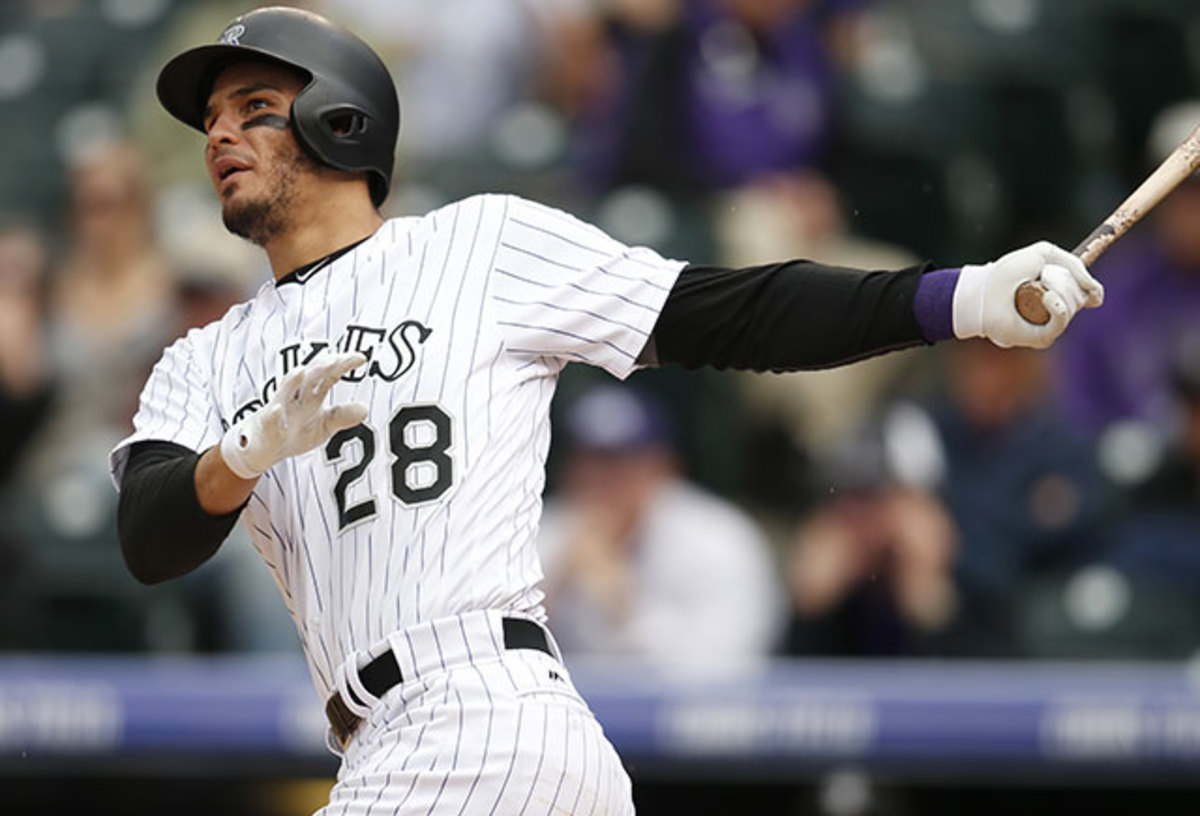
National League
1. Nolan Arenado, 3B, Rockies
Season Stats: .321/.393/.679 (159 OPS+), 13 HR, 31 RBIs, 28 R, 91 TB
Put Manny Machado in Coors Field and you get Arenado, who turned 25 last month and is a little more than a year older than Machado but arguably even better in the field, if that’s possible. Rockies hitters have a steep climb in the MVP race, as they’re battling not just the other best players in the league but also the dramatic discounting of their performance due to their home park and, typically, their team’s poor showing in the standings. As a result, the only Colorado hitter ever to win the NL MVP was Larry Walker in 1997, when he not only hit an absurd .366/.452/.720 but also stole 33 bases and won the Gold Glove in rightfield.
Arenado doesn’t steal bases, but he has won the Gold Glove in all three of his major league seasons, he is a slam dunk to win a fourth this year, and he is continuing to mature as a hitter (after drawing just 21 unintentional walks last year, he has 14 already this season against just 15 strikeouts). Arenado may have to lap the field in order to claim this award in November, but thus far, he has done exactly that.
• MORE MLB: Scherzer takes it to the max in 20-strikeout performance
2. Daniel Murphy, 2B, Nationals
Season Stats: .409/.449/.661 (187 OPS+), 5 HR, 22 RBIs, 22 R, 84 TB
The only hitter with more than 26 plate appearances this season still boasting a batting average above .400, Murphy is riding high on a .439 batting average on balls in play that is ripe for regression. This list is based on performance to this point in the season, however, not projection. With that in mind, Murphy is the clear choice for runner-up as of now.
Beyond that batting average, Murphy has carried his power surge over from late last season. He drew the most accolades for his historic postseason binge in which he hit home runs in six straight games for the Mets, but he also slugged .544 with eight home runs over the final 58 games of the regular season. Including his magical October, Murphy hit .308/.342/.585 with 15 home runs over 272 plate appearances from Aug. 2 through the end of the World Series, and he has now hit 20 home runs over his last 408 PA. Subtract 100 points of batting average from his current line and you get .309/.349/.561—a very similar performance to his second-half spike.
3. Aledmys Diaz, SS, Cardinals
Season Stats: .382/.413/.667 (181 OPS+), 5 HR, 18 RBIs, 23 R, 68 TB
Diaz, a 25-year-old Cuban defector signed by the Cardinals in 2014, is another player due for a batting average regression. Diaz wasn’t even on St. Louis’ Opening Day roster, but injuries to Jhonny Peralta and Ruben Tejada wiped out the team’s depth at shortstop. An Opening Day injury to Tommy Pham had a similar impact on the Cardinals' supply of righthanded bats, prompting Diaz’s promotion as a player who could address both issues—and has he ever. Diaz started at shortstop on his first day in the majors and hit safely in his first five major league games, mixing in a home run, a triple and three doubles to lock down the starting shortstop job. Tejada has since returned and been relegated to the bench, and the Cardinals are now trying to figure out how to get both Diaz and Peralta into the lineup after the latter’s return next month.
If Diaz continues his hot hitting—and he has in the month of May (.290/.324/.516 in 34 plate appearances)—that could mean Peralta will spend more time at the infield corners than at shortstop. With Peralta due to turn 34 later this month and in the penultimate year of his contract, the Cardinals would be wise to give the 25-year-old Diaz every chance to prove that his performance this season has legs.
• MORE MLB: Why Strasburg extension is dangerous move for Nationals
Cy Young
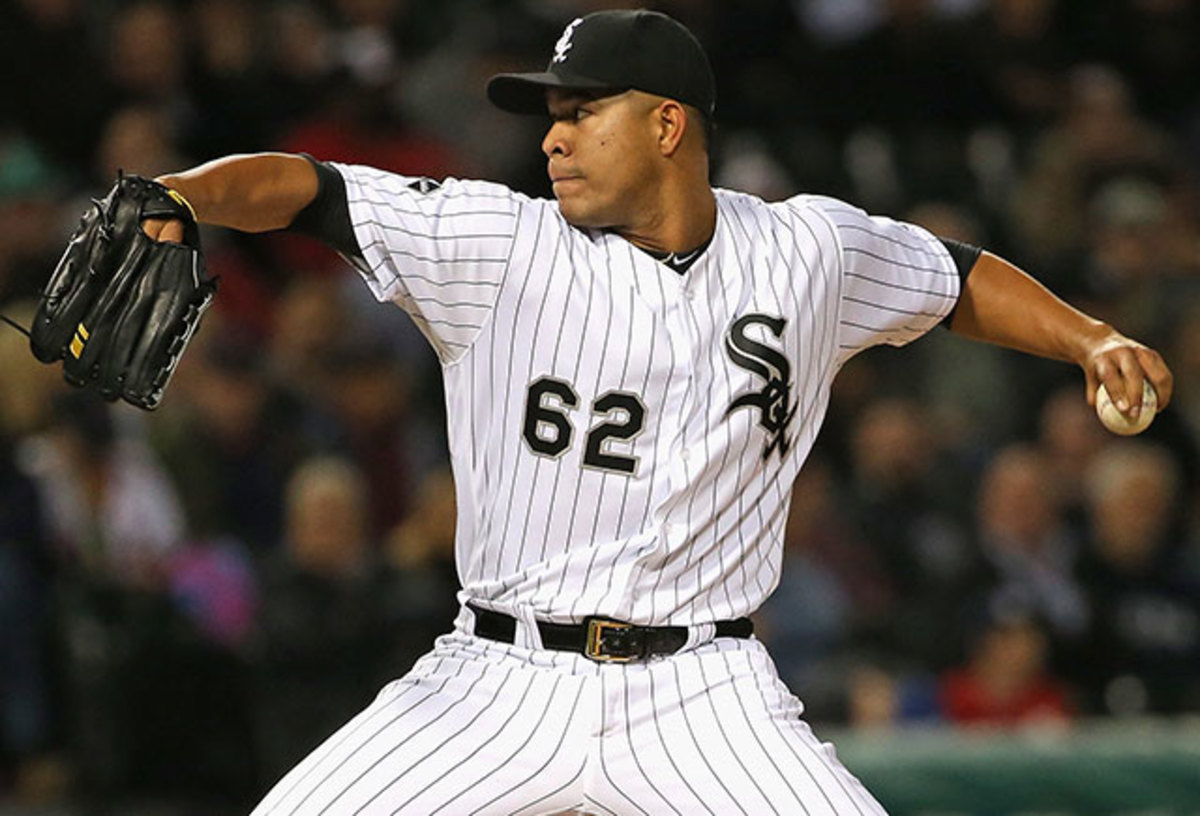
American League
1. Jose Quintana, LHP, White Sox
Season Stats: 5–1, 1.38 ERA, 0.99 WHIP, 8.3 K/9, 4.67 K/BB, 6.5 IP/GS, 2.88 DRA, 279 ERA+
2. Chris Sale, LHP, White Sox
Season Stats: 7–0, 1.79 ERA, 0.78 WHIP, 8.4 K/9, 4.70 K/BB, 7.2 IP/GS, 1 SHO, 2.90 DRA, 215 ERA+
Quintana and Sale are both benefiting from improvements the White Sox have made elsewhere on the diamond, resulting in a dramatically improved team defense (both in the outfield and the infield) and an increase in run support. For Sale, who has finished in the top six in the AL Cy Young voting in each of the last four years, that has helped him get off to the best start of his career despite a drop in strikeout rate. For Quintana, that has combined with improvements in his own game to make him Sale’s equal this season. Both have made just seven starts in 2016, but Quintana’s strikeout rate and strikeout-to-walk ratio stand as career highs, and he has allowed just one home run in 45 2/3 innings. Both have also made six quality starts in their seven turns.
Sale has the edge in innings and WHIP, but the former is by just 4 2/3 frames, and the latter is due in part to his likely unsustainable .206 BABIP on the season. Quintana not only leads the league in ERA but also in FIP (2.12), and he edges Sale in DRA as well. Quintana’s one loss, meanwhile, came in a 3–2 game decided by an unearned run, albeit one that scored on his own fielding error. These two 27-year-old lefthanded teammates are in a dead heat at this point, but for now, the edge goes to Quintana, who is 4–0 with a 0.64 ERA in four starts since suffering that loss.
• MORE MLB: Which stars are next for extension after Strasburg?
3. Rick Porcello, RHP, Red Sox
Season Stats: 6–1, 3.11 ERA, 0.99 WHIP, 8.9 K/9, 4.60 K/BB, 6.6. IP/GS, 3.25 DRA, 138 ERA+
Didn’t expect to see Porcello here, did you? There’s an interesting thing going on in the AL Cy Young race right now: Beyond Quintana and Sale, the pitchers with the sparkling ERAs have lousy peripherals and the pitchers with the sparkling peripherals have lousy ERAs. Take, for example, Detroit's Jordan Zimmermann, whom you were more likely expecting. He has a 1.50 ERA but just 5.3 strikeouts per nine, a 2.55 strikeout-to-walk ratio and a 4.07 DRA. Then there’s Boston's David Price, who is leading the league with 11.5 strikeouts per nine and has a 4.42 strikeout-to-walk ratio and a 2.59 DRA but also holds a miserable 6.75 ERA.
Porcello does the best job of splitting that difference. Since allowing four runs in six innings in his season debut in Toronto, he has turned in six straight quality starts, posting a 2.68 ERA over that span. What’s more, Porcello’s season is of a piece with his performance after returning from the disabled list last August. In eight starts after returning from injury last year, Porcello posted a 3.14 ERA, 8.9 strikeouts per nine, a 5.18 strikeout-to-walk ratio and 7.2 innings pitched per start. Still just 27, Porcello looks like he just might earn his four-year, $82.5 million extension after all.
• MORE MLB: Strasburg extension leaves 2016 pitching market thin
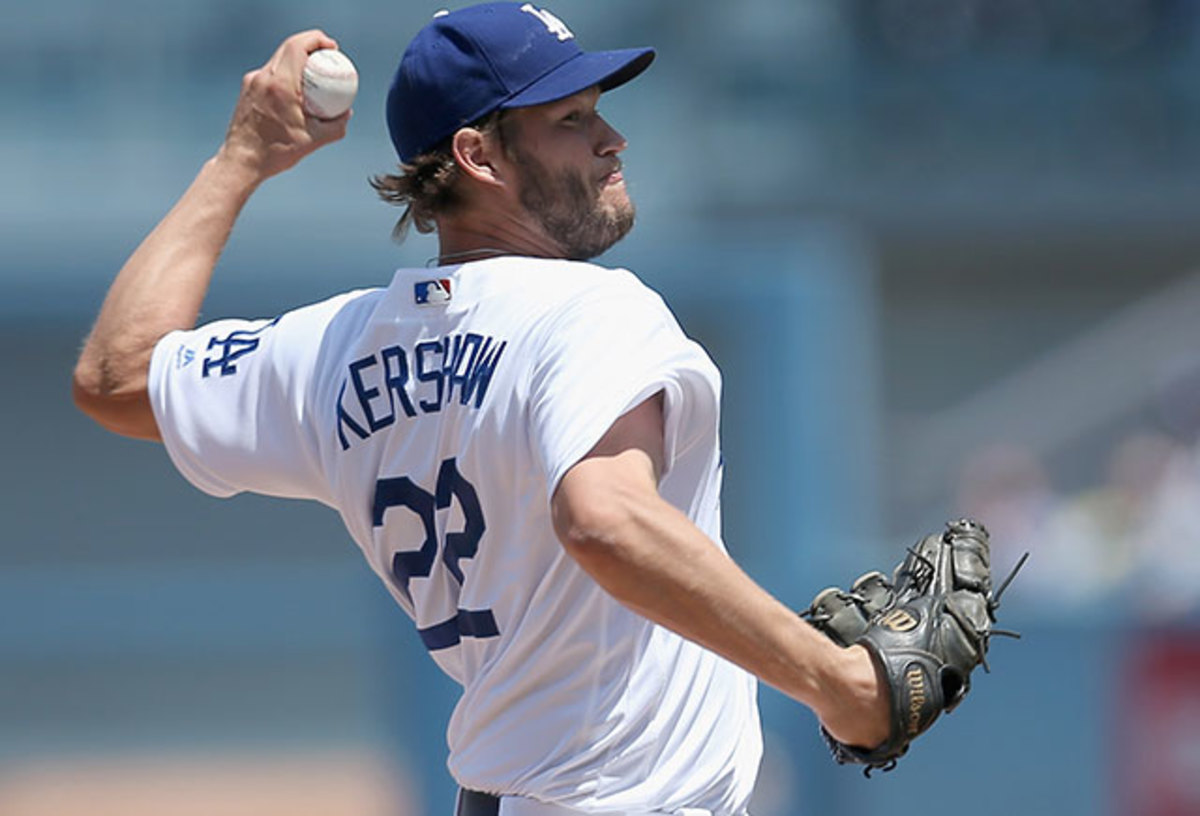
National League
1. Clayton Kershaw, LHP, Dodgers
Season Stats: 4–1, 2.04 ERA, 0.77 WHIP, 10.9 K/9, 21.33 K/BB, 7.6 IP/GS, 1 SHO, 1.83 DRA, 188 ERA+
Not included in the italicized type above is Kershaw’s major league-leading 1.63 FIP or the fact that he has walked just three men all season despite leading the NL in innings pitched with 53. Kershaw has yet to pitch fewer than seven full innings in a start this season, and six of his seven starts have been quality—yet another category in which he betters Jake Arrieta. Kershaw has also struck out fewer than nine men in just two of his seven starts on the season and will bring a streak of four straight double-digit strikeout totals into his start against the Mets on Thursday night. Did I mention he has walked just three men all season? Kershaw isn’t giving up that “best pitcher in baseball” title easily.
• MORE MLB: Red-hot Cubs are making Wrigley Field happiest place on earth
2. Jake Arrieta, RHP, Cubs
Season Stats: 6–0, 1.13 ERA, 0.88 WHIP, 8.3 K/9, 2.75 K/BB, 6.9 IP/GS, 1 SHO, 3.55 DRA, 363 ERA+
Since capping his quality start streak with his second no-hitter on April 21, Arrieta has twice failed to pitch into the sixth inning in his last three turns. Over his last four starts, including the no-no, he has walked 14 men at a rate of 4.8 per nine, giving him a 1.71 strikeout-to-walk ratio over that stretch. I guess he is human, after all. Arrieta is also getting a ton of help from his defense (which is likely benefiting from a lack of Kyle Schwarber in the outfield), as evidenced by his .203 BABIP on the season. You might be surprised to see Arrieta ranked second on this list, but I’d argue that this race isn’t even particularly close right now.
3. Noah Syndergaard, RHP, Mets
Season Stats: 3–2, 2.53 ERA, 1.04 WHIP, 10.7 K/9, 6.11 K/BB, 6.6 IP/GS, 2.13 DRA, 155 ERA+
Syndergaard just edges out Washington's Stephen Strasburg for the third spot here. The two have nearly identical ERA+ figures, exactly identical WHIPs and strikeout-per-nine rates, and each has allowed three home runs. Strasburg has thrown 2 2/3 more innings, but Syndergaard has been stingier with his walks and comes out ahead in ERA+, FIP and DRA. Syndergaard gets the edge for now, though new reports about the Mets having doctors examine his elbow after his lone non-quality start of the season on May 1 raise concerns about how long Thor will be able to remain on this list.
• MORE MLB: Syndergaard joins select club of pitchers who can actually hit
Rookie of the Year
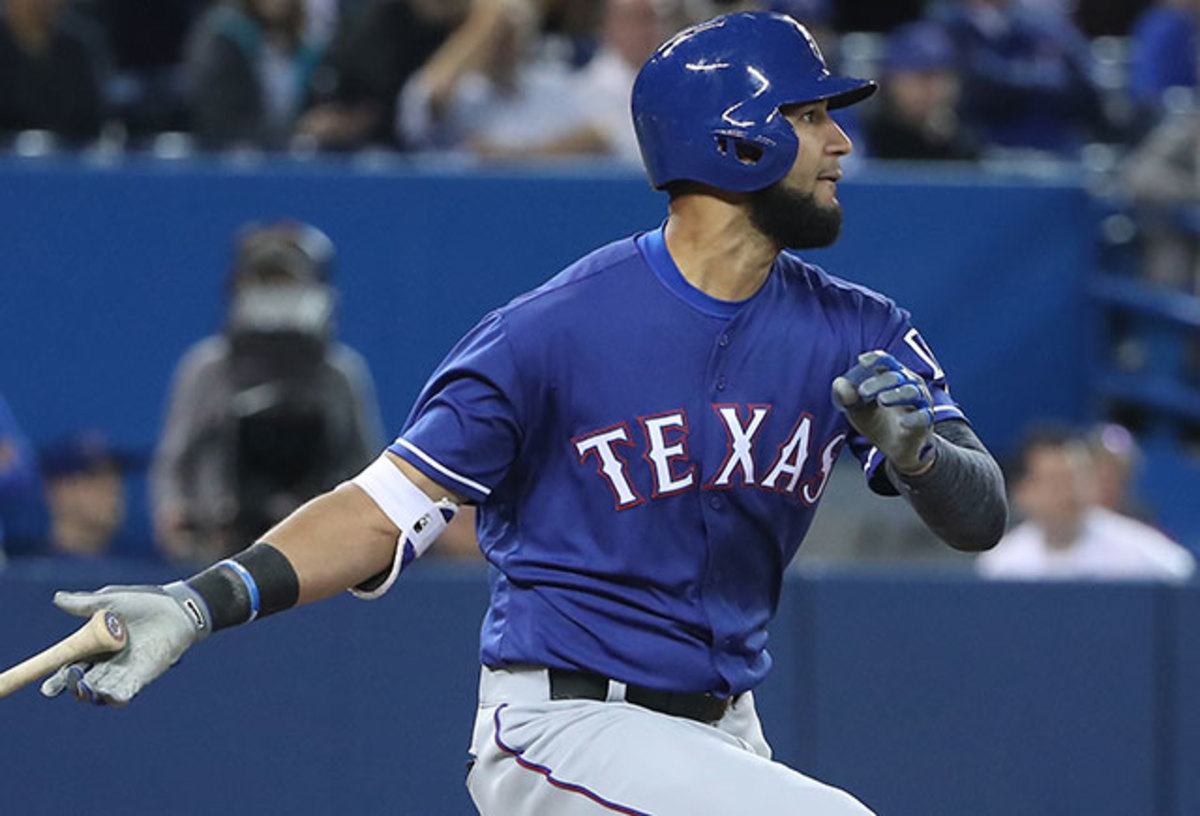
American League
1. Nomar Mazara, RF, Rangers
Season Stats: .314/.372/.457 (124 OPS+), 4 HR, 12 RBIs, 16 R, 48 TB
Well that was fast. Signed out of his native Dominican Republic in 2011, the now-21-year-old Mazara didn’t crack top-100 prospect lists until before last season. A strong performance at Double A in '15, however, goosed him up to fifth on Baseball Prospectus’ top 101 prospects list heading into this season. Still, he had just 20 games at Triple A under his belt coming into this season and seemed likely to spend most of the year there. Then after just three more games for Round Rock, he found himself called up to the majors when Shin-soo Choo hit the disabled list with a calf strain. Mazara went 3 for 4 with a home run in his major league debut and has looked like he belongs in the Rangers’ starting lineup ever since, also impressing with his play in rightfield.
Choo started a rehab assignment on Wednesday, but with the Rangers battling for first place in the AL West again and with Delino DeShields and Prince Fielder both struggling at the plate, Mazara seems likely to stay put.
2. Byung-ho Park, DH/1B, Twins
Season Stats: .237/.321/.527 (131 OPS+), 7 HR, 12 RBIs, 13 R, 49 TB
A 29-year-old veteran of the Korea Baseball Organization, Park got off to a slow start in his first year in the major leagues and will head into Friday’s series opener in Cleveland nursing an 0-for-12 slump. But over a three-week stretch from April 18 to May 6, he hit .348/.404/.761 with five home runs, proving that he belongs in a major league lineup.
3. Chris Devenski, RHP, Astros
Season Stats: 0–2, 1.72 ERA, 1.09 WHIP, 7.8 K/9, 3.86 K/BB, 9 G, 3 GS, 3.47 DRA, 231 ERA+
A throw-in from the White Sox when the Astros sent Brett Myers to Chicago in a 2012 waiver trade, Devenski, 25, is a former 25th-round pick out of Cal State-Fullerton who spent most of his minor league career as a swing man and has never thrown a pitch in Triple A. The righty was assigned to Triple A out of camp this spring, but before he could get into a game, he was called up as bullpen depth after Michael Feliz was pressed into long relief duty and ultimately replaced him as the Astros' long man. Devenski struck out four, walked none and allowed just one hit over three scoreless innings in his major league debut in Milwaukee, and after two comparatively brief scoreless outings, he returned to long-relief duty and allowed just one run over 8 1/3 innings in a trio of outings against the Rangers and Red Sox.
That strong work earned Devenski a spot start in Oakland on April 30, and his solid outing there (5 IP, 2 R) earned him another turn. Two quality starts later, he appears to have stolen Scott Feldman’s rotation spot, and now he’s a Rookie of the Year candidate.
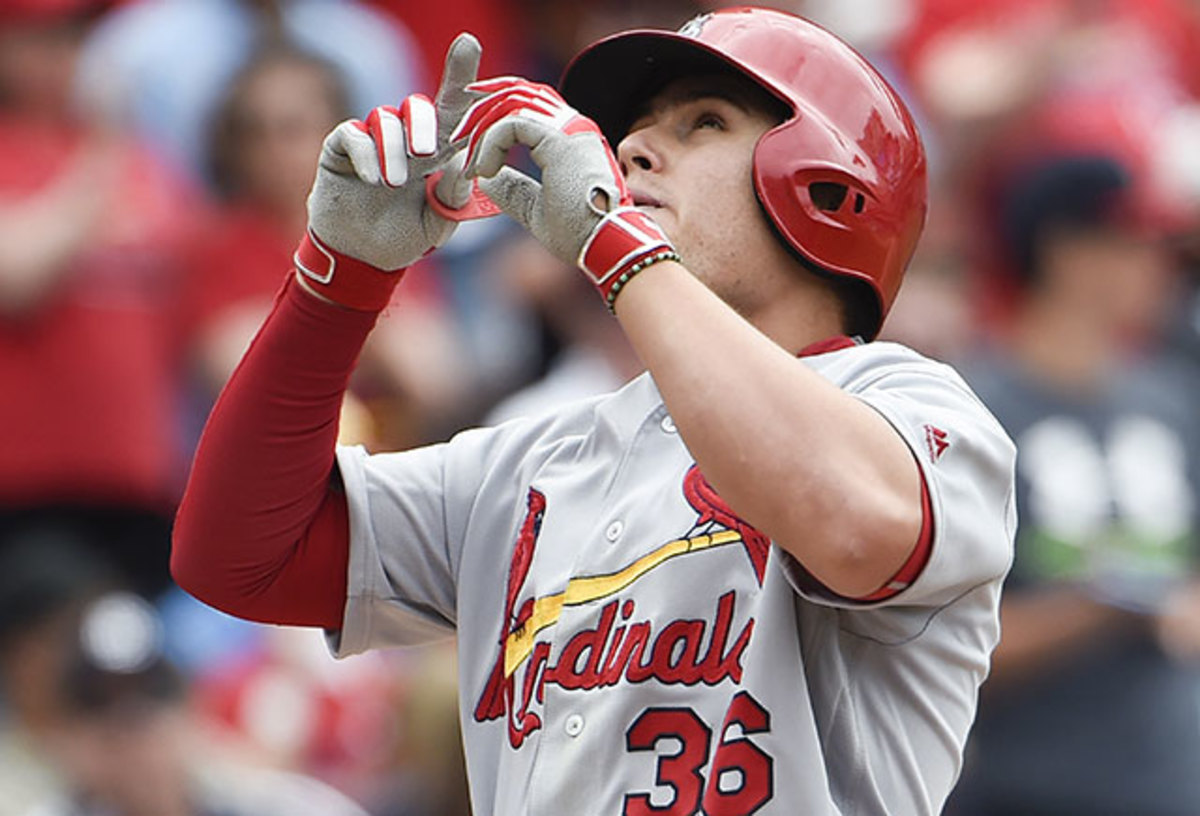
National League
1. Almedys Diaz, SS, Cardinals
Season Stats: .382/.413/.667 (181 OPS+), 5 HR, 18 RBIs, 23 R, 68 TB
Blocked by Arenado and Murphy in the MVP race, Diaz doesn't have to contend with those two in the battle for Rookie of the Year honors.
2. Trevor Story, SS, Rockies
Season Stats: .266/.327/.597 (122 OPS+), 11 HR, 27 RBIs, 24 R, 83 TB
Since hitting seven home runs in his first six major league games, Story has hit just four more, but that comes with a .250/.320/.473 line that is more than good enough for a rookie shortstop. Story’s strikeout rate (32.7% of his plate appearances have ended with a punchout) is a concern, but he has exceeded expectations in the field, and his power, while not as otherworldly as it seemed at first, is real. Story has also hit better on the road than at home, making him additionally valuable to the Rockies, whose struggles to score away from Coors have been their biggest undoing as a franchise. The 23-year-old former first-round pick appears to be here to stay.
3. Kenta Maeda, RHP, Dodgers
Season Stats: 3–2, 2.30 ERA, 1.02 WHIP, 8.0 K/9, 3.17 K/BB, 6.1 IP/GS, 3.56 DRA, 167 ERA+
Maeda made (or at least matched) history by allowing just one run in his first four major league starts, tying that total with his own bat by hitting a solo home run in his debut in San Diego. Since those first four outings, however, he has gone 0–2 with a 5.09 ERA, and that homer remains his only major league hit. Maeda still hasn’t faced a team for a second time this season, so further correction could be coming, but for now, those first four starts carry enough weight to keep him in the top three in what is shaping up to be a very competitive NL Rookie of the Year race.
Honorable mentions here include Dodgers shortstop Corey Seager, Diamondbacks utilityman Brandon Drury, Mets pitcher Steven Matz, Cardinals outfielder Jeremy Hazelbaker and relief pitcher Seung-hwan Oh, Padres reliever Ryan Buchter and Marlins reliever Kyle Barraclough.
